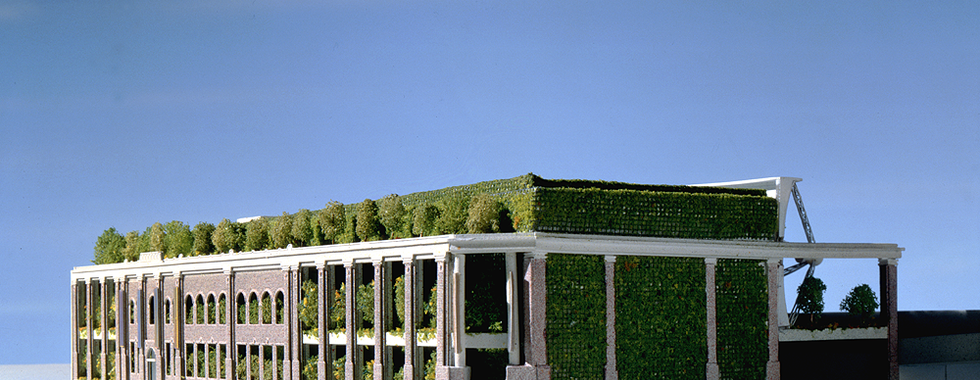MUSEUM OF MODERN ART AND CINEMA MUSEUM (MAMBA)
- emilio ambasz
- Oct 18, 2023
- 1 min read
BUENOS AIRES, ARGENTINA (1997)
Situated in an historical district, the two independently operated museums form a single cultural center known as the Polo Cultural Sur. Each requires separate entrances, collections, workshops, auditoria, archives and administrative facilities. These two buildings have little in common spatially or stylistically: one an aging modernist concrete frame office building (Cinema Museum), the other a handsome nineteenth century factory building known as the Tabacalera (Museum of Modem Art). The solution is found through the use of Grand Facades. The front and side facades are conceived as a complex facade of 'hanging gardens' which dually shelters the interior spaces from the direct north light and donates Io the street a lush, green backdrop. The rear facade, which faces onto an elevated highway, is conceived as a giant video projection, a kind of 'moving billboard,' Io provide an appropriately scaled presence for the zooming traffic overhead. With the facades modulating the exteriors, the interiors are designed to be highly functional and archivally sound spaces for each museum. The Tabacalera building's well-detailed masonry and concrete structure preserved as loft spaces offer the greatest flexibility and protection for the extensive and extremely varying spatial requirements of contemporary art. The new gallery building provides huge, unobstructed space for large installations. New spaces created below ground level pro- vide storage, archives and a multimedia auditorium. The Cinema Museum's concrete frame holds three screening rooms, the largest of which occupies the lower portion of an existing courtyard, as well as gallery spaces for the permanent and rotating exhibits, gift shop, library and reading room, and administrative offices.













